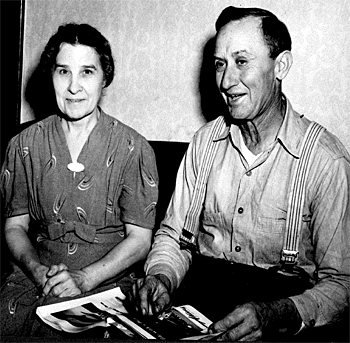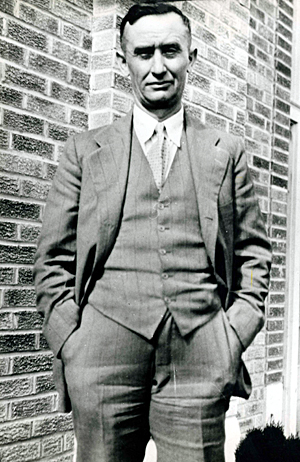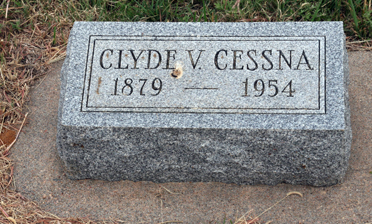Photographer Lindsey and I ventured here more than a month ago. We found little left of any of the sites, although we really didn't know where to look.
I want to thank Robert Yarmer for his help in sharing his wife's family history. Here's a little bit from my latest dead town story.
In the summer of 1855, when prairie pioneers Williams Allison and
Francis Booth came to what would someday be Barton County, there was
nothing here but windswept prairie, Indians and buffalo along with the
occasional schooner heading toward Santa Fe on the Santa Fe Trail.
Fort
Larned wouldn’t be established for another few years and there was
little settlement west. Nevertheless, the two men decided to build a
settlement along Walnut Creek on the trail – offering supplies and
respite to those making the journey.
These days, there is little
left of the settlements that sprang up along the trail just east of
Great Bend – a few stones in a field, remnants of dugouts and a handful
of civilian graves deep below a field of greening wheat.
 |
| The autumn 1966 cover of the Kansas Historical Quarterly features a
water color of Fort Zarah on the Santa Fe Trail as illustrated by Henry
Worrall. |
Allison
Ranche, along with a town of Zarah that would develop a short distance
to the north about 15 years later, have both disappeared – meeting the
fate of more than 6,000 other settlements that once populated the state
in the latter half of the 1800s.
A trading post
William Allison, a man with just one arm, and Francis Booth had
become familiar with the route as former conductors of the monthly mail,
according the Kansas State Historical Society. They had encountered
Indians along the trail and knew of the hazards of the prairie.
Therefore,
132 miles beyond Council Grove, they established a trading post on
Walnut Creek, located in the domain of the nomadic Plains Indian tribes
and of the buffalo range.
The July 1855 issues of the Independence, Mo.-based publication, the Occidental Messenger, gave this account of the pioneers.
‘Mr.
Wm. Allison and Booth, known as famed prairie men, have determined to
make a settlement at Walnut Creek on the Santa Fe road. A short time
since . . . they started on an expedition to the gold region; their
mules and provisions giving out, and not being able to purchase any on
the road from any train, they abandoned the idea of going further toward
the Wichita diggings, and returned here, determined to settle on Walnut
Creek. Booth left a month or two since, and Allison this week, and from
last reports of Booth’s progress, he was busily engaged in building
houses and corrals.
This is the first attempt at building by
citizens made West of Council Grove, and we hope it may grow up in a
short time a flourishing settlement. The men at the head of this
enterprise are well known here, and distinguished for their energy and
determination, they have no fear about them. ... This settlement will be
another stopping point on the route to New Mexico and will make, in a
little while, the road less dangerous by lessening the distance between
civilized points and affording those in danger or want an opportunity to
obtain relief.”
On August 25, the Occidental Messenger also
reported that Allison and Booth’s post was nearing completion, with the
men hoping to open trade to Indians and any travelers who needed
“provision and aid as they journey.”
In December 1856, a post office was established at the ranche, with Allison as postmaster, according to the historical society.
In
February 1857, the Santa Fe Gazette published this notice that Allison
and Booth had established a trading house and general depot at Walnut
Creek on the trail, having on hand groceries, provisions, forage and
corrals, according to the historical society article. However, by
September, the partnership ended. An article in the Santa Fe Gazette a
month later reported: The Mexican who brutally murdered Mr. Booth and
Walnut Creek last month, by splitting his head open with an ax, was
arrested in San Miguel County last week.”
Meanwhile, according to
the historical society, Allison continued to prosper as train traffic
boomed. Those venturing toward Pikes Peak in search of gold took the
mountain branch of the road to head to Colorado.
Despite his success, Allison died in 1859 of heart failure.
Peacock and Rath
Following Allison’s death, George Peacock took over the ranche.
Peacock’s
time at the post, however, was short. Kiowa war chief Satank was
arrested after almost passing out from drinking too much at Peacock’s
post. Satank escaped but asked Peacock to write a letter of introduction
saying he was a good Indian. Not counting on Satank having the letter
translated, Peacock instead headed warning to those who read it – saying
the Indian was treacherous and dangerous.
According to the state
historical society, in the fall of 1860, Satank led warriors to the
ranch and killed Peacock and five other men and stole all of the
livestock.
Trader and buffalo hunter named Charles Rath took over
the trading post next, and he expanded the operation, even helping
establish a toll bridge across Walnut Creek.
Meanwhile, as attacks subsided, the military abandoned Fort Zarah in 1869.
 |
| Unearthing remains of the ranch house at Walnut Creek Crossing of the
Santa Fe Trail (near Great Bend) as supervised by State Historical
Society archeologists May 31, 1969. The photograph was taken looking
north along the west footings. |
The town of Zarah
Not long after Fort Zarah’s
abandonment, a town by the same name was formed on the edge of the
fort’s property, just north of Allison’s Ranche, Yarmer said.
It was 1870, says Yarmer, adding his wife’s great great uncle, Titus Buckbee, a cattleman, was one of the founders.
Back then, Yarmer said, “everyone wants to start a town, sell lots and be a mayor. That was where the money was.”
Buckbee
had been in the Civil War before venturing west. His prison stay at
Andersonville during the war hindered his health, Yarmer said.
Zarah
would have a blacksmith, a grocery and a livery, among a handful of
other stores. In 1871, Buckbee became the town’s postmaster, becoming
the first postmaster since Barton became a county.
It also had a
murder. Buckbee’s brother-in-law Zach Light was minding the store for
Buckbee when a man came in asking for crackers, according to the book
“Deadly Dozen: Forgotten Gunfighters of the Old West, Volume 2” by
Robert K. DeArment. The man wanted cheese for his crackers. Light said
he had none.
“This is a hell of a town,” the man said, adding Zarah was letting Great Bend “get away with things.”
Light
said if he didn’t shut up, he would shoot, according to the book. And
he did, hitting the man in the forehead. Light fled and, despite being
arrested by authorities, never stood trial for the killing.
The
town went on for a time, but Zarah’s existence wouldn’t last. Great Bend
leaders were working to gain the county seat title. Formed in 1871,
town leaders knew survival depended on whether they could secure the
honor. An election in 1872 decided the towns’ fates. Ellinwood would
receive 22 votes, Great Bend 144 and Zarah 33.
Also, Yarmer said, Santa Fe Railroad had reached Barton County that year and didn’t put a depot in Zarah.
“Politicians
from Illinois – they knew how to grease the skid,” Yarmer said, adding
the story is these Great Bend officials “bought cases of whiskey and
dined the railroad. Zarah tried to do the same, but didn’t have the
moxie to do it.”
Angry, Zarah folks moved most of the buildings to Ellinwood’s downtown. Fires destroyed the buildings, Yarmer said.
Little left
Today,
there is little left of this area’s early settlement. A sign on the
side of the road near Great Bend tells the history of Fort Zarah,
although the park isn’t located on the actual fort site. A display at
the Barton County Museum also shows artifacts found from digging
exhibitions, Neuforth said.






















.jpg)
